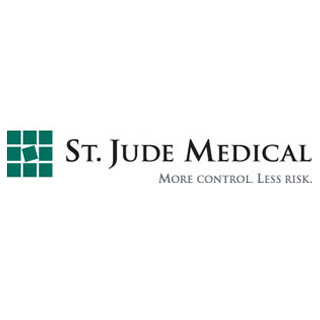
Data from the implant procedure, in-clinic follow-up visits and remote transmissions sent from a patient’s home is apparently gathered and stored in Merlin.net PCN. Merlin@home remote transmitter may send remote transmissions that could include both patient-initiated and automatic follow-ups and monitoring transmissions. The wireless monitoring system also enables the physicians to assemble a more complete patient record by easily transferring cardiac device data into electronic health record (EHR) systems, in addition to giving physicians more timely access to significant patient and device data.
The radio-frequency (RF), St. Jude Medical implantable cardioverter defibrillators (ICDs), non-RF Epic ICDs, Atlas ICDs, Current ICDs and Promote CRT-D devices along with the Accent RF pacemaker and the Anthem RF CRT-P are all claimed to be supported by the newest version of Merlin.net PCN, version 4.0.
The Accent RF and Anthem RF product families use radio frequency (RF) telemetry that supposedly facilitates secure, wireless communication between the implanted device and the device programmer or Merlin@home transmitter. The remote monitoring abilities of these devices which are assisted by the Merlin.net PCN may allow automated hands-free follow-up, and daily device safety checks with no patient interaction required.
Dr. Chris Plummer, Consultant Cardiologist at Freeman Hospital, Newcastle, UK commented “Remote monitoring of ICDs has been an important development in the management of patients. Systems like the Merlin.net PCN allow us to monitor patients’ cardiac conditions more closely, and our patients and our staff find remote monitoring convenient and time-saving. Being able to wirelessly download data from a St. Jude Medical Accent RF pacemaker confirms the optimal performance of both the pacemaker and the Merlin.net PCN. We look forward to extending the advantages of remote monitoring to more of our pacemaker patients.â€
DirectTrend Viewer reporting capability is supposedly featured by this latest version of the Merlin.net PCN. It may be used to augment visibility into patient trends that could simplify patient management and boost clinical insight. The DirectTrend Viewer reporting feature supposedly lets physicians follow data over time connected to clinical events, alerts and recent transmissions.
Eric S. Fain, M.D., president of the St. Jude Medical Cardiac Rhythm Management Division mentioned, “Our focus with this next-generation system continues to be on giving physicians timely, actionable data, and improving disease management. Adding the DirectTrend Viewer Reporting feature helps improve the speed at which physicians receive and can interpret information, so they can effectively manage their patients’ conditions.â€
To help physicians in precisely identifying and managing patients with fast rates in the heart’s upper chambers (atria), the DirectAlerts Notification feature on the Merlin.net PCN supposedly work with the Accent RF and Anthem RF devices, as well as the Promote Accel, Current Accel and AnalyST Accel devices to include a new AT/AF Alert feature. This feature is supposedly designed to inform physicians when a quick atrial rate – atrial tachycardia or atrial fibrillation (AT/AF) surpasses a programmed value or happens over an extended time period. The devices may also be programmed to supposedly warn the patient of AT/AF episodes, as well as device- and lead-related issues. This is done through a two-tone audible alert in low voltage devices, or a vibrating patient notifier in high voltage devices. These features may permit the physician to more proactively manage patients’ atrial arrhythmias, such as AF.
Remote monitoring of ST segment shifts, which may be detected by the AnalyST and AnalyST Accel ICD is supposedly also enabled by version 4.0 of the Merlin.net PCN. The company’s proprietary ST Monitoring diagnostic algorithm seem to be constantly monitoring for changes in a specific portion of the heart’s electrical rhythm, known as the ST segment. These changes may point out conditions such as ischemia which could happen when blood flow/oxygen to the heart muscle is blocked. The DirectAlerts feature of Merlin.net PCN may let the physicians ask for specific ST segment alerts that could be sent through e-mail, pager or SMS text to inform them of changes in their patient’s condition.
This innovative and secure Internet-based remote care system could probably help patients with implanted medical devices.
